

Nostalgia; Old photos bringing back fond memories
Recently my good friend John Breach decided to look through his collection of picture slides; this of course was the cutting edge format before digital cameras and Power Point presentations became the norm.......
Having invested in a machine to transfer his slides to a digital format, John started 'down memory lane' as he viewed old pictures on his new format. A phone call to The English Apple Man followed and having received pictures from John in which I feature, it makes a fun story to publish in this week's English Apple Man Journal.
But: Before that, Sarah Calcutt sent me pictures and a summary of one of the places The National Fruit Show apples & pears were distributed to and the positive impact this fantastic fruit had on a local community - Kentish Town City Farm
Below a message from Simone at Kentish Town City Farm to Sarah Calcutt......
"On Sunday we celebrated all that is apple at our annual Apple Day Event. It was a busy afternoon of games & activities and, of course, tasting a wide variety of UK heritage apples. More than 800 visitors attended and in the process over £2000 was raised in support of the farms' maintenance and care of the animals.
Click to visit Kentish Town City Farm
Below: Visitors at The Kentish Town City Farm
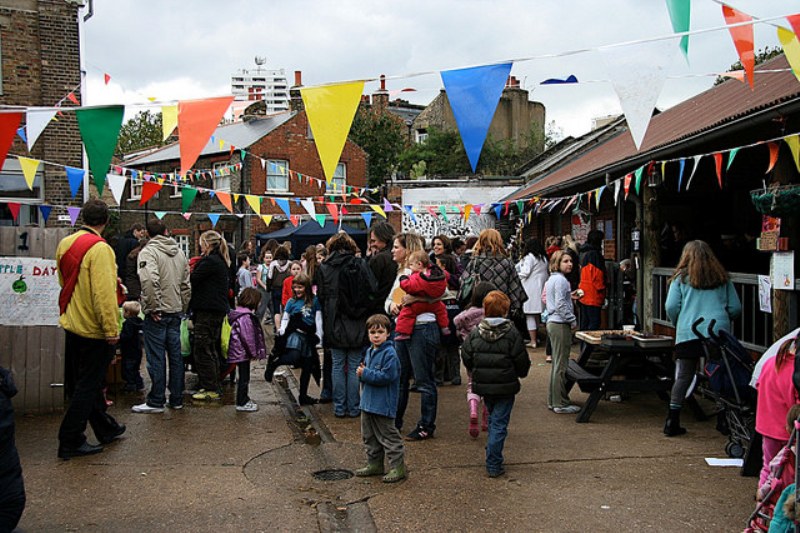
Below: This novel apple board interests the children - and - peeling apples can be fun
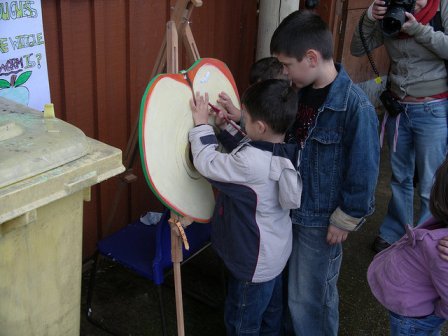
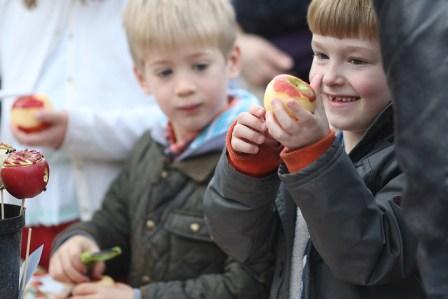
Below: Apple bobbing - and - face painting are always popular
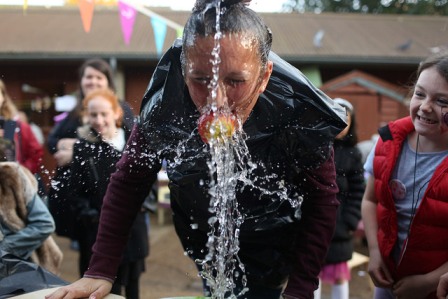
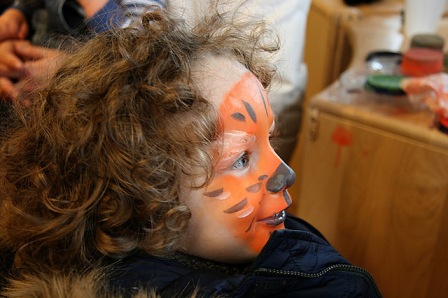
Down Memory Lane
Nostalgia is a wonderful thing, which is generally a prerogative of us 'senior citizens' and my nostalgia buds were aroused when John Breach sent me a set of pictures which he took some 30+ years ago.......
Back then John organised regular visits to France where the main focus was a visit to the Nursery in Vlllers Cotterets where the apple trees he sells in England are sourced. In those days the nursery - Pepinieres du Valois was owned by the larger than life 'Charles Andre' - these were happy times as we enjoyed Charles hospitality and in addition to visits to the nursery fields and orchards, we also visited places like Vimy Ridge and I remember one occasion we were taken into Paris where we enjoyed a trip down the Seine and a visit to Montmartre.
Returning to Vimy Ridge, it was 1983; I remember as we walked around the immaculate cemetery feeling stunned by the ages of the brave soldiers lying at rest in the peaceful surroundings - 17, 18, 16, 17, 17, 16, 18, 17, 17........at that time our son was seventeen and we imagined this immature young man plunged into that most horrific war zone. Visiting the trenches at Vimy Ridge, where our young Canadian and British soldiers peered out at the enemy no more than 40 yards away.......we saw the curtain which was drawn across the divide in the tunnels to ensure 'first timers' making their way to the front could not see the dead and injured being brought back from the front......
Below: The Canadian Memorial at Vimy Ridge
 Standing high on top of Hill 145, captured on April 10th by the Canadian troops, the huge memorial is an overpoweringly impressive monument. The soaring, twin-columned memorial, seen for miles around, commemorates the Battle of Vimy Ridge, fought on April 9th, 1917, by four Canadian divisions alongside British soldiers. The Canadians were serving under their commander, Lieutenant-General Sir Julian Byng, who later became Governor General of Canada.
Standing high on top of Hill 145, captured on April 10th by the Canadian troops, the huge memorial is an overpoweringly impressive monument. The soaring, twin-columned memorial, seen for miles around, commemorates the Battle of Vimy Ridge, fought on April 9th, 1917, by four Canadian divisions alongside British soldiers. The Canadians were serving under their commander, Lieutenant-General Sir Julian Byng, who later became Governor General of Canada.
The park today, one of the few places on the western front where you can wander through the trenches, is a strange mix. It is beautiful with its undulating landscape and wooded slopes through which the trenches twist and turn. But it's also chilling; the enemy trenches are so close and the 11,285 Canadian trees and shrubs commemorate the number of soldiers 'missing'. There are 14 craters dotted around the park, full of Allied mines detonated on April 9th. There are wartime tunnels, trenches, craters and unexploded armaments on the site, so much of it is still closed off!
On one of our 'forays into France' the legendary Devora Peake, the founder of Copella fruit juice came with us and ensured we drank copious bottles of Coppella Apple juice as we travelled........... Copella - an acronym of the initial letters of Cox's Orange Pippin (COP) plus the end of the name of her youngest daughter, Carmella (ELLA).
Our host - Charles Andre was a great character who never married; devoting his time to growing trees in the Pepinieres du Valois nursery and growing apples commercially in his orchards. Each time we visited Charles, we were served refreshments on the lawn in front of the old Chateau....I well remember a very senior member of his family/staff (not sure which) who came out of the Chateau carrying a large tray of food while dressed in a striking Union Jack apron....
Below: The English Apple Man on the left sitting behind Devora Peake - and - Charles Andre & Devora Peake at The Chateau at Villers-Cotterets
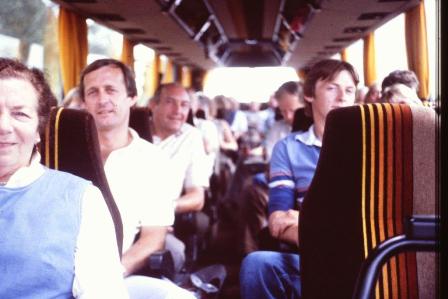
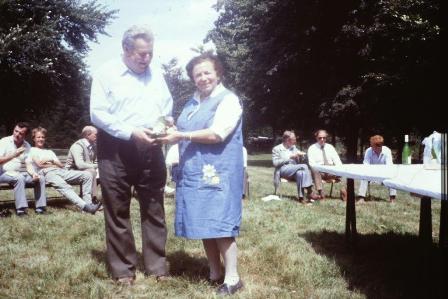
Below: The Chateau which served as home for Charles Andre and the offices of Pepinieres du Valois
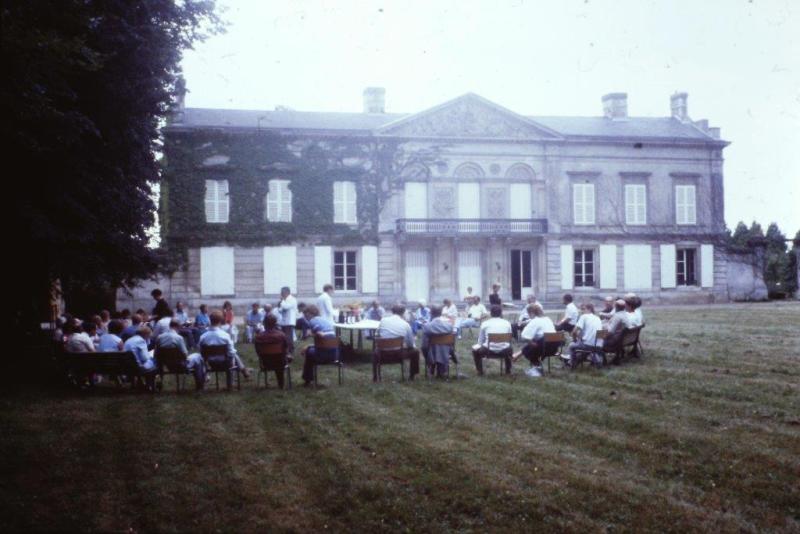
On one occasion we ventured into Flanders to visit the original source of 'Flanders Cox' a high coloured natural sport (clone) of Cox
Below: Visiting Flanders Cox in Flanders - The English Apple Man is the 'youthful' 41 year old on the right
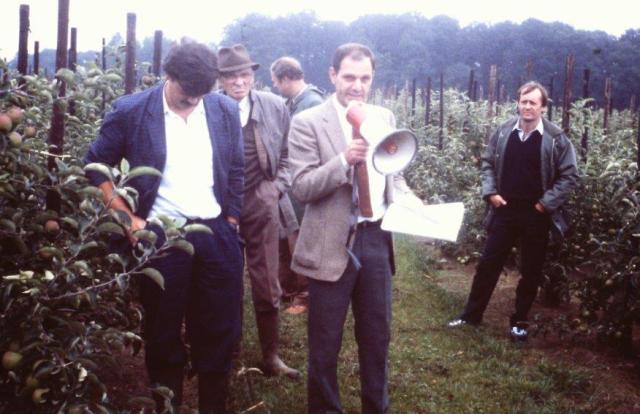
John also sent me these pictures taken at my farm in Hawkhurst in the mid 1980's - I planted several Flanders Cox orchards during the late 1970's - early 1980's due to the much higher 'natural' red colour inherent to Flanders. At the same time my other new orchards were Queen Cox - a higher coloured clone of Cox Orange Pippin. Flanders did suffer more skin russeting in 'difficult years' when early frosts influenced poor skin finish. Queen Cox became the 'standard' for many years, but now Cox Lavera with even better red colour has become more widely planted........
Below: The English Apple Man in an orchard of Flanders Cox at our family farm in Hawkhurst circa mid 1980's
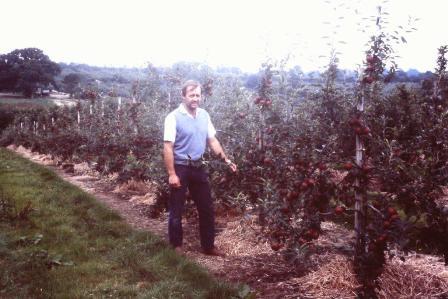
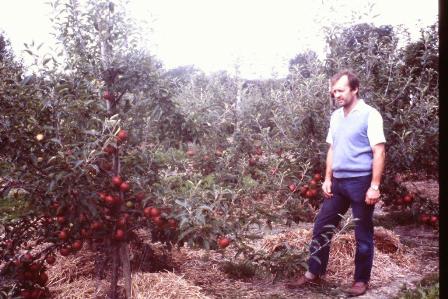
Below: a VEE system 'trial' orchard at my farm, with Queen Cox, Flanders Cox and Golden Delicious & Ida Red as pollinators - and - comparison samples of Queen Cox v Flanders Cox
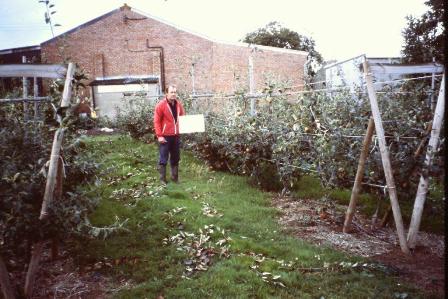
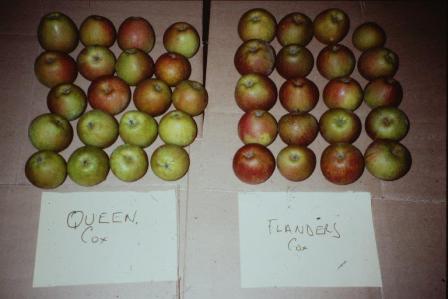
Continuing the Memory Lane theme, my old friend Malcolm Withnall saw my review of Michael Clark's new book - 'APPLES a field guide' and having bought a copy from Michael at The Fruit Show returned home to 'Mrs Withnall' with his acquisition, Mrs W said; 'Michael Clark - that rings a bell!
Below: Malcolm's story of 'Apples a field guide by Michael Clark ~ an amazing coincidence.
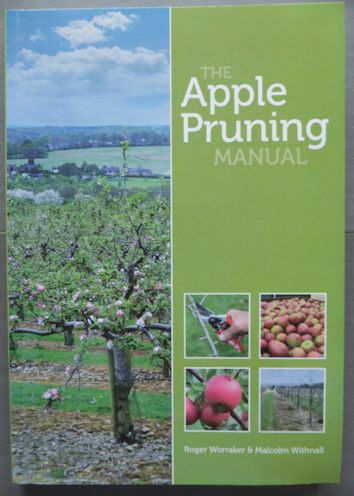 "Like The English Apple Man, I too have a copy of 'Apples a field guide' by Michael Clark. However my family's connection to Michael is even more curious than EAM's meeting in his B&B described in a recent posting on the book - see Journal for 30 The October 2015.
"Like The English Apple Man, I too have a copy of 'Apples a field guide' by Michael Clark. However my family's connection to Michael is even more curious than EAM's meeting in his B&B described in a recent posting on the book - see Journal for 30 The October 2015.
"My wife was 'farmed out' from Norfolk in her early years, as she was one of five children. She was born in WWII, and her father worked with the Ministry of Food on the 'Dig for Victory' campaign. As a small child she was farmed out to family relatives at Cuffley in Hertfordshire, and went to the local school. A life-long friend, Stella Jones (now Read), was befriended at the school, Stella's Mum being a renowned local artist, Stella becoming a talented flower arranger, having trained at Constance Spry's London School. Michael Clark was also a school friend, along with others still kept in contact with to this day One, Rodney Slatford, became Head of Music at Birmingham University, and hosted his own music programme with BBC Radio. Michael produced a 'Cuffley book' decades ago, based on the Literary Group in the community. My wife's uncle (who she stayed with) was a mover in these circles, and I visited the 'Cuffley Set' in my early married life. My family has a copy of Michael's Cuffley book on our bookshelf. My wife recognised his style and art-work immediately.
Stella married a horticulturist, both husband and wife being lifelong friends of ours. Richard, her husband, both trained in Essex, and we subsequently worked together on the South Coast, he in growing chrysanthemums, me growing fruit crops, both for the same family firm. Richard worked in Grand Canaria growing cuttings, eventually retired and set up a breeding nursery to champion Gaillardia and Leucanthemum (Shasta daisy) in a partnership with an old school buddy with whom I played school rugby.
With a lifetime of work in horticulture, this little tale confirms what a small brotherhood we hortics work within, one never knowing what strand of the web one might bump into at any time. Michael Clark, Richard Read, John Guest are all pieces in the same jigsaw puzzle!
What a lovely story; it is often said we are no more than six steps from any other person in the world.......I believe that!
Last week I encouraged my readers to consider seriously buying Joan Morgan's new 'Book of Pears' and her 'New Book of Apples' which was first published in 2002. This is an opportune moment for me to remind my readers about the 'Apple Pruning Manual' by Malcolm Withnall & Roger Worraker, which includes many colour photographs and diagrams: priced @ £10.00 plus £2.00 p&p, published by Malcolm Withnall 2013; total cost is £12.00.
 Malcolm let me into a secret - "we received a text from Santa Klaus, c/o Greenland, last week, to confirm it is the most frequently requested present for fruit growers..........
Malcolm let me into a secret - "we received a text from Santa Klaus, c/o Greenland, last week, to confirm it is the most frequently requested present for fruit growers..........
Copies of the book can be obtained from Malcolm Withnall, Woodcut Cottage, Ashford Road, Hollingbourne, Kent ME17 1XH; e-mail: Malcolm Withnall
A few more Memory Lane Pictures.......
These picture were given to me recently by my (Step) Mum who found them in a drawer; she is now 90 years of age, so who know's what is hiding in places yet to be discovered. Sadly very few pictures were taken in the pre & post war years of our apple orchards, I guess photography was not one of my father's interests.......it is a shame because I cherish the few I have and would loved to have photographic records of the standard trees of the 1930's which were still part of the fabric of our fruit farm when I left school in 1958.
The orchard below in bloom was our biggest orchard with 12 acres of Cox Orange Pippin and Sunset and Worcester Pearmain @ 1 in 9 as pollinators. 'Great Smith' as it was named was planted in the mid 1950's and I kept it until grubbing and replanting in the latter part of the 1980's.
Below: Great Smith in the 1960's
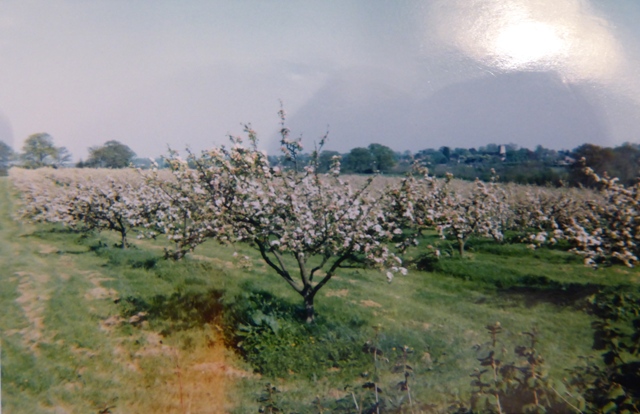
My regret that I have few pictures from those days, is compounded by very few of my Father in our orchards; below is 'one' of him in 1973 (I think) just two years before he died in March 1975.......the other picture shows my son Stuart picking with Doug my right hand man, they are picking in Great Smith - circa late 1970's.....
Below: My father Jack admiring these Cox trees at harvest time - and - my son Stuart picking apples with Doug
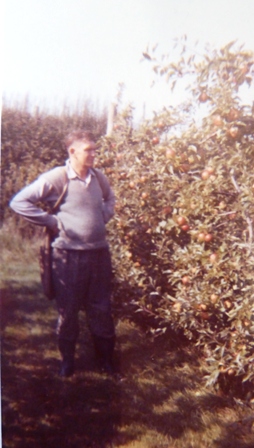
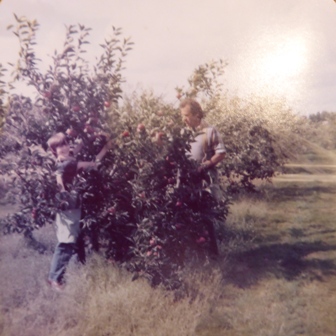
That is all for this week.......next week The Journal will be back with present day events and stories....
Take care
The English Apple Man